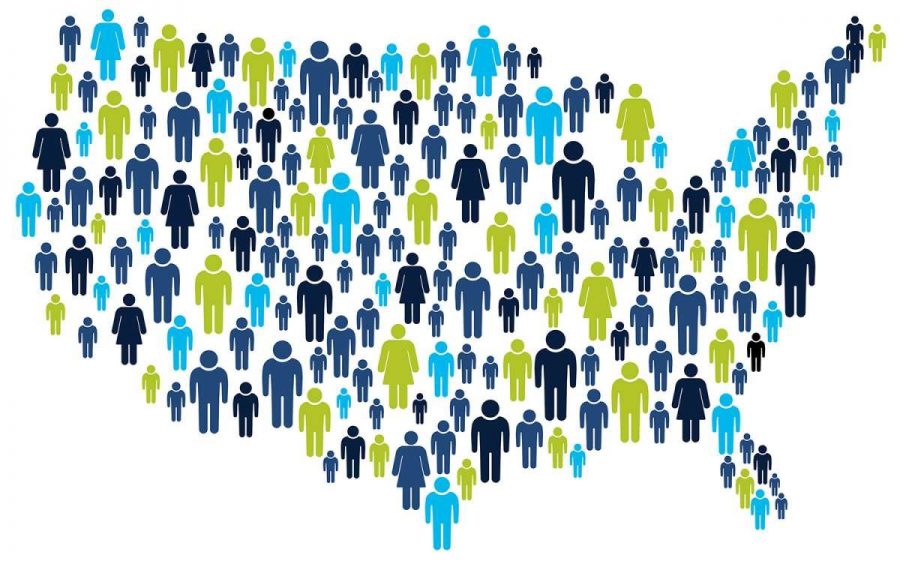Making it count: wrapping up the 2020 census
The United States Census is a vast operation affecting the distribution of trillions of dollars in federal money. As of Oct. 13, Vermont had collected 99.9 percent of its census data. And after many back-and-forths on the federal level, delays caused by the COVID-19 pandemic, and litigation, the Supreme Court ruled that the Trump administration could end the decennial count on Oct. 15, slightly ahead of the previous end date of Oct. 31.
The amount of controversy surrounding this year’s census is, in some ways, a testament to the importance of the data being collected. They affect the apportionment of money at the federal, state, and local level, as well as the way that house districts are drawn and the number of Electoral College votes each state controls.
According to the George Washington Institute of Public Policy, Vermont received roughly $2.5 billion in federal money for 55 programs in 2016, guided by data from the census. Another George Washington analysis found that for each person missed in Vermont’s 2010 census count, the state would lose $2,309 in federally apportioned money. Another way of looking at this, according to George Washington, is that an additional undercount of 1 percent in 2010 would result in a loss of roughly $14.5 million in 2015.
This year’s count was particularly tough, according to Jason Broughton, the state’s commissioner of libraries and chair of the Vermont Complete Count Committee. “COVID changed everything,” Broughton said.
Broughton said that the census would normally take five months, but this year it was completed in three — even with extended deadlines — because COVID-19 cut off the beginning of the census-taking season. Field workers did not get onto the ground until July, Broughton said.
There are two main ways the Census Bureau collects data. The first is through self-reporting, where people either fill out their own forms online or send them in through the mail. About 60 percent of people report this way. The second way is through field workers going door to door to collect data from those who did not respond on their own.
Broughton noted that a complete count is not necessarily the same as an accurate count, which is another concern brought up by the shortened timeframe allowed for this year’s census.
One of the things that are consistently stressed by the census and the census workers interviewed for this article is the role of confidentiality and neutrality in the bureau’s work. Field workers are required to swear a lifetime oath to keep any information collected while employed as a census taker secret.
“Its goal is to make sure that, no matter what party you’re in politically, the role of the census is to be neutral. And they are trying to do that, I think, as best they can, under some very unique circumstances,” Broughton said.
Ari Erlbaum was a census field worker this past summer and fall. He said that his experience of the job depended on the day. Sometimes it would be pleasant meeting lovely people, and sometimes there would be angry or suspicious people, and yet other times there would be few people at all while he checked empty houses and wrestled with the census taking application on his phone.
“I think it was less exciting than I thought it would be in a lot of cases,” Erlbaum said. “I’m a fairly social person and like meeting people, but most of the time, I would meet people and then ask them these very boring demographic sorts of questions so not actually get to meet people and make that much connection.”
But, Erlbaum noted, this is part of how the job must work. Anything a census worker does on the job reflects on the Census Bureau and could impact the integrity of the count, so it is better to avoid conversations ranging beyond what is necessary for data collection.
“I thought it would be a kind of a fun adventure, and it felt a lot like work. But it was really well-paid work, and it was a good job. So on the whole, it was worth it, I would say,” Erlbaum said.
The job, Erlbaum said, gave him an opportunity to see sides of Vermont that he might not normally encounter when only interacting with his chosen social group. “It’s neat to see how people live across Vermont, and see the character of towns, and see styles of life that are not the ones I normally hang out with,” Erlbaum said.
The worst part, Erlbaum said, was wandering amongst unoccupied dwellings, leaving notices on doors, and talking to uncomfortable and sometimes-hostile neighbors.
In an email on Oct. 14, Broughton said that Vermont and a few other states had lucked out by finishing the majority of the count ahead of the new Oct. 15 finish date.



